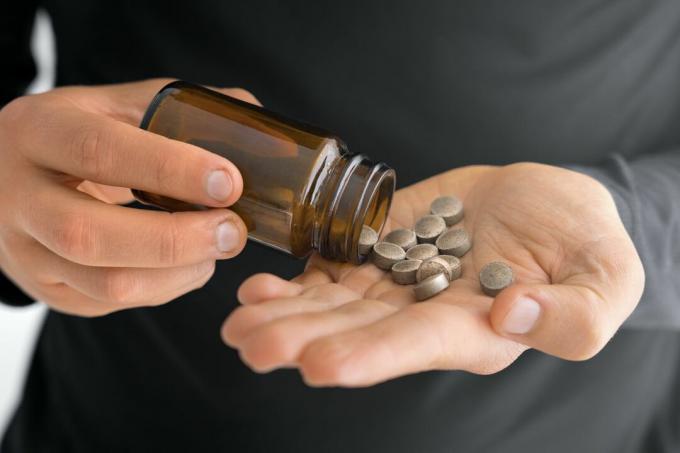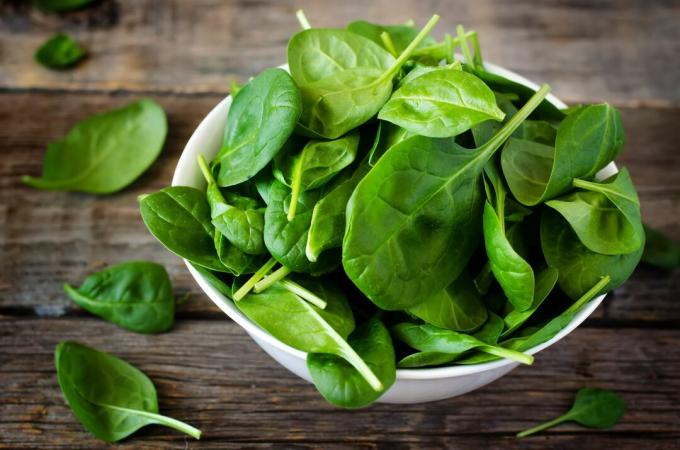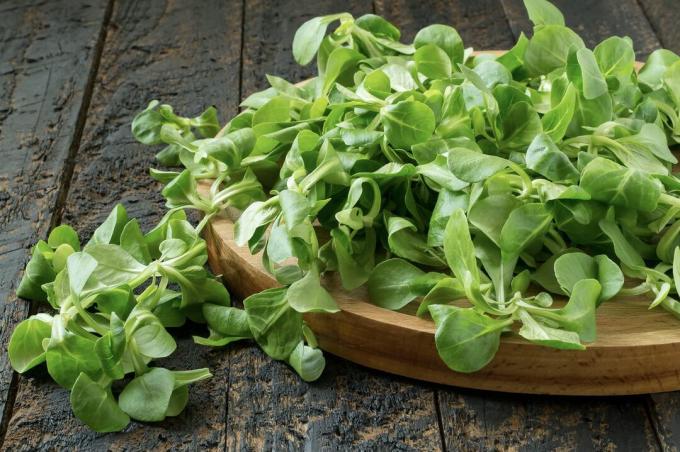Iron is essential as an important building block of the body - we will show you ten vegetables with a lot of iron that will help you meet your daily iron requirements.

Iron plays a fundamental role in our body because it is an important trace element that is particularly important in our metabolism. If an iron deficiency occurs, we therefore often feel generally ailing and sickly. It is all the more important to prevent an iron deficiency early on. A balanced diet with vegetables rich in iron is the first step in supplying your body with the important raw materials. But which vegetables contain a lot of iron? In this article, we introduce you to ten iron-rich vegetables that are a healthy addition to your diet.
contents
- Iron-containing vegetables: why is iron healthy?
-
Overview: Which vegetables contain a lot of iron?
- 1. Kidney beans
- 2. lenses
- 3. Chickpeas
- 4. spinach
- 5. Salsify
- 6. Swiss chard
- 7. Lamb's lettuce
- 8. peas
- 9. Kale
- 10. arugula
Iron-containing vegetables: why is iron healthy?
Although iron only occurs in low concentrations as a trace element in our body, it plays an extremely important role in ours Metabolism: As part of our blood pigment hemoglobin, iron is responsible for binding oxygen and then delivering it to our organs transport. Iron also plays an important role in supplying the muscles with oxygen, which is why athletes in particular need to ensure that they have an adequate iron supply. Iron also plays a role in various enzymes, is required for some metabolic processes and is also involved in signal transmission by nerve cells.
So that all of these tasks can be carried out by iron in our body, it is important that we take in a sufficient amount of the trace element through food. An iron deficiency is often shown by general symptoms such as tiredness, fatigue and paleness. But also (mucous) skin diseases, brittle nails and disorders of hair growth can be a consequence of iron deficiency. To avoid iron deficiency in the first place, men need around 10 mg iron per day, while women should consume 15 mg iron per day. The German Nutrition Society even recommends an intake of 30 mg iron per day for pregnant women. A balanced diet plays the most important role in the supply of iron. Meat is particularly rich in iron, but the iron content in various vegetables is also very high.
By the way: Too high an iron concentration in the body is also harmful and can manifest itself in diarrhea and vomiting. However, too much iron intake through food is almost impossible - instead, incorrectly dosed iron supplements or illnesses are behind the rare increase in iron values. So you don't have to be afraid of eating too many vegetables that contain iron.

Overview: Which vegetables contain a lot of iron?
Animal products are often mentioned as particularly good sources of iron, but vegetables with a high iron content are also well suited to ensure an adequate supply. However, the iron in vegetables is less well utilized than that from animal products, as it is in trivalent form and first has to be converted by the body. However, one can improve the absorption of iron from vegetables by Vegetables high in vitamin C. integrated into the meal, as vitamin C promotes iron absorption. Foods with a high phytate, tannin, phosphate or oxalic acid content, on the other hand, inhibit iron absorption and should only be combined with iron-rich vegetables to a limited extent.
1. Kidney beans
With a whole 8.2 mg iron per 100 g, the kidney beans (Phaseolus vulgaris) the list of vegetables high in iron. This means that kidney beans have almost four times as much iron as a pork schnitzel with the same weight. However, kidney beans also contain phytate, which is why their iron can only be partially absorbed by the body. Nevertheless, kidney beans are a great addition to the daily diet because they do not shine only with an excellent iron content but are also rich in protein and complex Carbohydrates. In addition to kidney beans, there are other beans, such as white beans, with a lot of iron.

2. lenses
Lenses (Lens culinaris) have always been considered not only delicious, but also very healthy. This could have something to do with the high iron content in vegetables: an average of 8 mg is hidden in 100 g of dried lentils. However, due to their phytate content, not all of the iron can be absorbed by humans. Still all are Types of lenses a useful addition to the dining table, because the iron-rich vegetables are also an excellent source of protein and impress with their high levels of potassium, calcium and zinc.
Tip: If you want to harvest the healthy vegetables yourself, you can easily do it in your own garden Planting lentils.
3. Chickpeas
Similar to kidney beans and lentils, chickpeas also shine (Cicer arietinum) with their high iron content. The iron-rich vegetables can boast 6.1 mg per 100 g when dry. Even here the availability of iron is limited by the high phytate content, but the vegetables are rich in iron and other strengths: The protein-rich satiety makers score with many vitamins and important minerals such as zinc, potassium or Magnesium.
4. spinach
For a long time it was believed that the iron content in spinach (Spinacia oleracea) is particularly high. In fact, the "iron bomb" spinach is just a myth that probably goes back to a calculation error. Nevertheless, the iron content in spinach is not to be despised: about 3.4 mg of iron are present in 100 g of fresh spinach. Spinach contains oxalic acid, which can slow down iron absorption, but at the same time it shines Iron-rich vegetables but also with a high vitamin C content, which increases the absorption of iron can promote. In addition, spinach not only has a lot of iron, but also scores with a high content of folic acid, potassium and magnesium.

5. Salsify
Salsify (Scorzonera hispanica) are among the lesser known types of vegetables today, but should not be underestimated. The almost forgotten vegetable variety impresses not only with its excellent taste, but also with its inner values: 110 g of the vegetable contain 3.3 mg of iron. The iron-rich vegetables also contain many important vitamins such as vitamins A, E and C as well as potassium and healthy fiber.
6. Swiss chard
If you are looking for a vegetable with iron, the Swiss chard (Beta vulgaris subsp. vulgaris) take a closer look: With 2.7 mg iron per 100 g, the vegetable has a high iron content. In addition, Swiss chard has a high vitamin C content, which also promotes the absorption of iron in the digestive tract. The iron-rich vegetables can also shine with a high proportion of minerals such as magnesium, calcium and sodium and also contain numerous vitamins.
Tip: Have you tried in your own garden Growing Swiss chard? If the vegetables are processed and enjoyed freshly harvested, the content of valuable ingredients is particularly high. A good introduction to growing vegetables is offered by our Plantura vegetable growing kit: The vegetables contained in it can be used by beginners and experienced thanks to the enclosed instructions Vegetable gardeners simply grow their own and soon supply you with protein-rich Swiss chard and other healthy ones Vegetables.
7. Lamb's lettuce
Lamb's lettuce (Valerianella locusta) is one of the most popular types of salad. No wonder, after all, it is Cultivation of lamb's lettuce Not only is it particularly easy, the plant is also tasty and healthy. We are particularly impressed by the lamb's lettuce with its iron content: 100 g of the fresh salad contain a total of 2.0 mg. The iron-rich vegetables also contain a lot of vitamin C, which supports the absorption of the trace element. In addition to iron, lamb's lettuce scores with high levels of vitamin A, folic acid and magnesium - making the winter salad a great source of nutrients for the cold season.

8. peas
The little green peas (Pisum sativum) are not only delicious, but also extremely healthy. In addition to digestive fiber and vegetable proteins, the vegetables also impress with iron: The iron-rich vegetables contain between 1.5 and 1.9 mg of the trace element. The phytic acid contained in peas reduces the absorption of iron somewhat, but at the same time peas also contain a lot of vitamin C, which in turn boosts iron absorption.
9. Kale
That kale (Brassica oleracea var. sabellica) to the particularly Vegetables rich in vitamin C. heard is already known to many. But did you know that kale is also a vegetable with a lot of iron? Kale has an iron content between 1.5 and 1.9 mg per 100 g and is therefore ideal as a vegetable source of iron. In addition, the high content of vitamin C improves iron absorption in the body. In addition to iron and vitamin C, kale also scores with its high content of beta-carotene and healthy mustard oils.
10. arugula
With its sharp, aromatic taste, rocket (Eruca vesicaria subsp. sativa) a particularly popular lettuce plant. The plant not only shines with its low calorie content, but can also be used as a Iron-rich vegetables are convincing: a full 1.5 mg of the trace element can be found in 100 g of iron-rich vegetables Plant. In addition, the iron-rich vegetable has a high proportion of healthy mustard oils and is considered a particularly good supplier of beta-carotene, Vitamin C, potassium and calcium - arugula not only provides important iron, but also contributes to a healthy diet at.

Not only iron is essential for keeping our body healthy. In our article on, we will tell you why we should also ensure that we have an adequate zinc supply and which foods contain a lot of zinc Fruits and vegetables high in zinc.



